Bangkok, called The City of Angels, is the capital of Thailand and also the largest city of the country.
Bangkok is a centre of administration, education, transportation, finance, banking, commerce, communication and prosperity. It is also the longest-standing city in the world. Chao Phraya River, which is the biggest river, flows through the city and divided it into two sides, named Phranakhon and Thonburi. The city has a total area of 1,568,737 square kilometres with a population of about 8.3 million.
Bangkok has many attractions such as the Grand Palace, Vimanmek Palace and temples which about 10 million people each year. It is the city with the most international tourists.
Bangkok is everything you’d expect from the capital of Thailand: it’s noisy, crowded, colourful, exciting, infuriating, and smile-inducing. There are ancient sites to be visited and modern shopping malls that have a kitschy yet high-end ambience. Bangkok can be overwhelming as its lifeforce smacks you in the face, but it’s a fascinating city that represents Southeast Asia’s tension between the developed and developing worlds. Here are the most famous places to visit in Bangkok.
– Grand Palace:
The Grand Palace is a complex buildings at the heart of Bangkok. It has been the official residence of the Kings of Siam, and later Thailand, since 1782. It’s also the home of Wat Phra Kaew, which houses the Emerald Buddha.
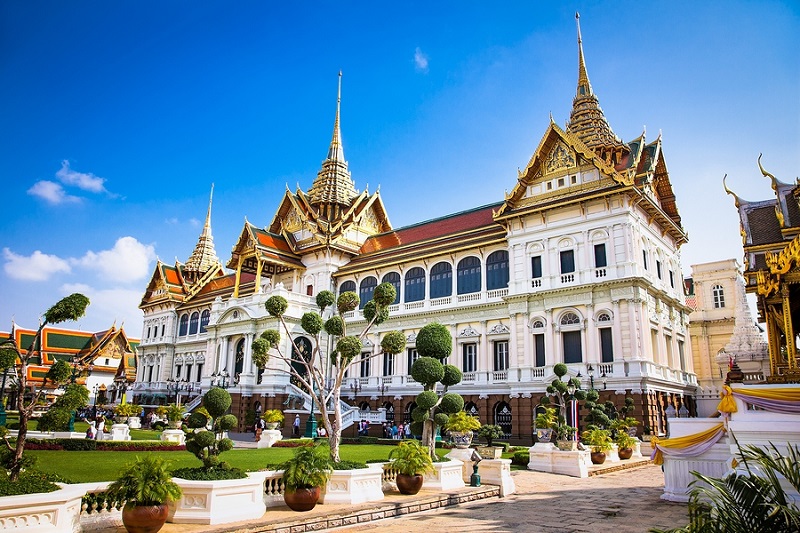
– Wat Pho, the temple of the Reclining Buddha:
The Wat Pho or “Temple of the Reclining Buddha” is one of Bangkok’s most attractive temples. It is a much visited temple complex due to its location immediately South of the Grand Palace and the huge Reclining Buddha image it houses.
The temple that is officially named Wat Phra Chetuphon Wimonmangkhalaram is one of the six temples in Thailand that are of the highest grade of the first class Royal temples.
The Wat Pho is the oldest and largest temple complex in Bangkok, it houses more than 1,000 Buddha images which is more than any other Wat in Thailand. Most of the images were brought over from abandoned temples in places as Ayutthaya and Sukhothai by order of King Rama I.
The temple is famous for its enormous gold plated Reclining Buddha image. The image named Phra Phuttha Saiyat was build during the reign of King Rama III in 1832 and is 46 meters long and 15 meters high.
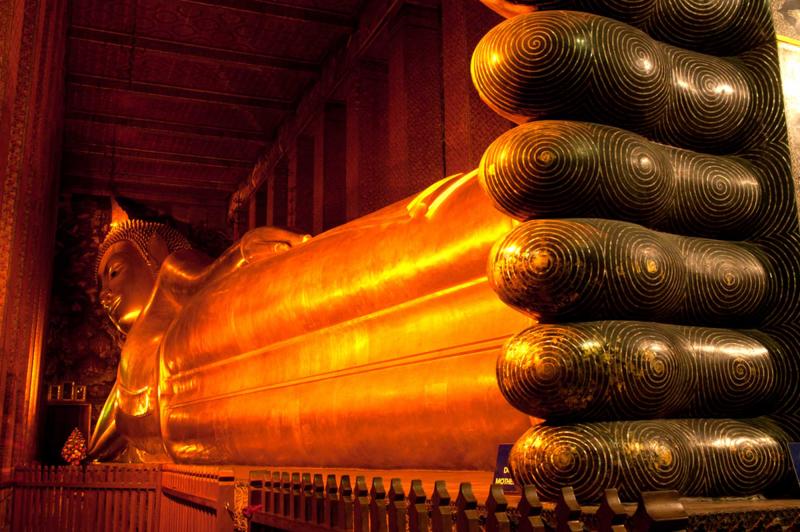
– Wat Arun:
Easily one of Bangkok’s most visually striking landmarks, the Temple of the Dawn (Wat Arun) towers over the Chao Phraya River. Its colorfully decorated spires are the star features—the temple’s central prang stands 79 meters tall and is intricately decorated with tiny pieces of colored glass and Chinese porcelain.
Named for the Hindu god Aruna who is said to emulate the rising sun, this Buddhist temple was built in the era of the Ayutthaya Kingdom, an ancient Siamese city-state. It’s now one of Thailand’s top landmarks, attracting visitors who come to wander the complex and its interior and those who clamber up the steep steps to enjoy unparalleled vistas of Bangkok’s skyline and the winding Chao Phraya River.
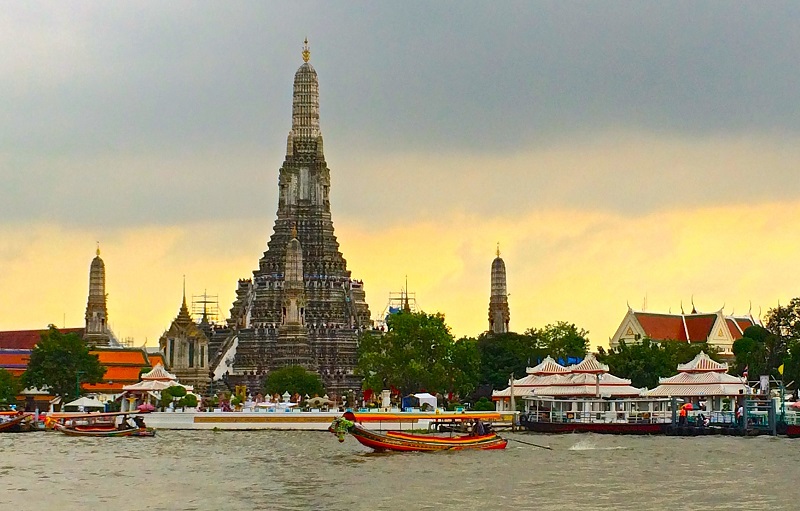
– Wat Traimit, the temple of the Golden Buddha:
The Wat Traimit temple in the Chinatown area of Bangkok is a Royal temple famous for the enormous gold Buddha image it houses.
The temple, which is officially named Wat Traimit Withayaram Worawihan and also known as “The Temple of the Golden Buddha” enshrines the massive solid gold Buddha image named Phra Phuttha Maha Suwan Patimakon displaying the subduing Mara mudra.
For centuries the true identity and value of the image were not known, until by accident in the 1950’s it was discovered that the image was made of solid gold. The image is more than three meters high, weighs some five and a half tons and is most likely some 700 to 800 years old. It is the largest solid gold Buddha image in the world.
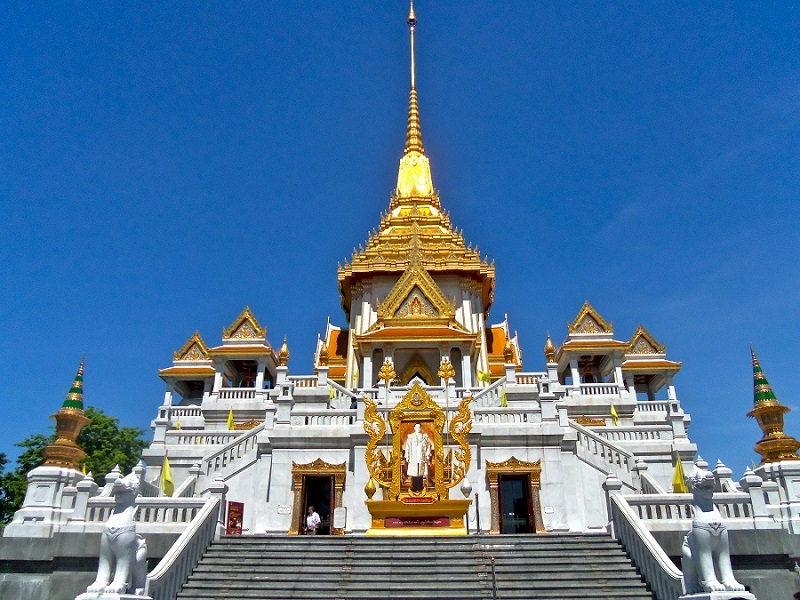
– Wat Suthat:
The Wat Suthat is one of the most important and one of the oldest temples of the Rattanakosin era in Bangkok. It is one of the six temples in Thailand of the highest grade of the first class Royal temples.
When Rama I became the first ruler of the Rattanakosin Kingdom in 1782, he ordered the construction of the Wat Suthat. Construction lasted for decades, and the Wat was finally finished during the reign of King Rama III in 1847.
The temple complex which is officially named Wat Suthat Thepphawararam is one of the largest in Bangkok covering 10 acres.
The viharn of the Wat Suthat is one of the oldest Rattanakosin era buildings still in existence. It holds the most important Buddha image of the Wat. The Phra Si Sakyamuni is a 8 meter high bronze Buddha image in subduing Mara posture. It was cast in Sukhothai some 800 years ago and was brought over to Bangkok from an abandoned temple in Sukhothai by river boat.
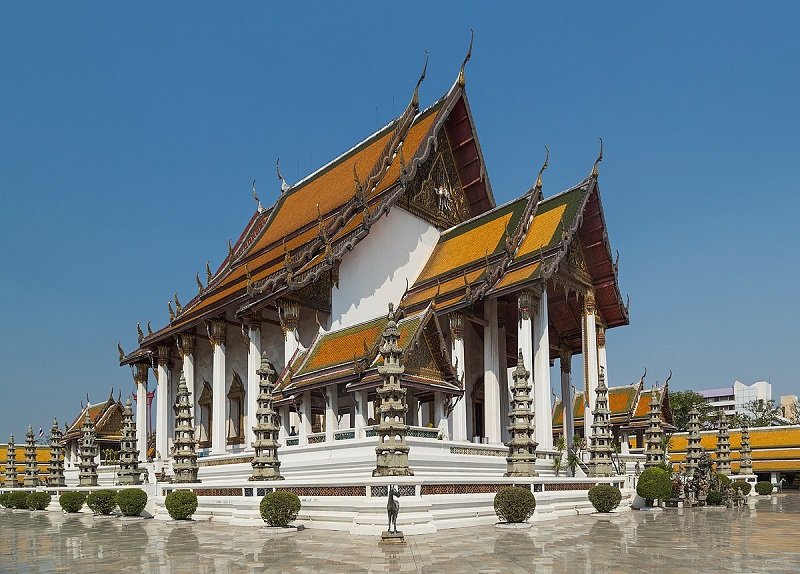
– Giant Swing:
The Giant Swing is a religious structure in Phra Nakhon and located in front of Wat Suthat. It was formerly used in an old Brahmin ceremony, and is one of Bangkok’s tourist attractions.
It was constructed in 1784 in front of the Devasathan shrine by King Rama I. During the reign of Rama II the swing ceremony was discontinued as the swing had become structurally damaged by lightning. In 1920 it was renovated and moved to its current location in order to make space for a gas plant. The ceremony was again performed until 1935, when it was discontinued after several fatal accidents.
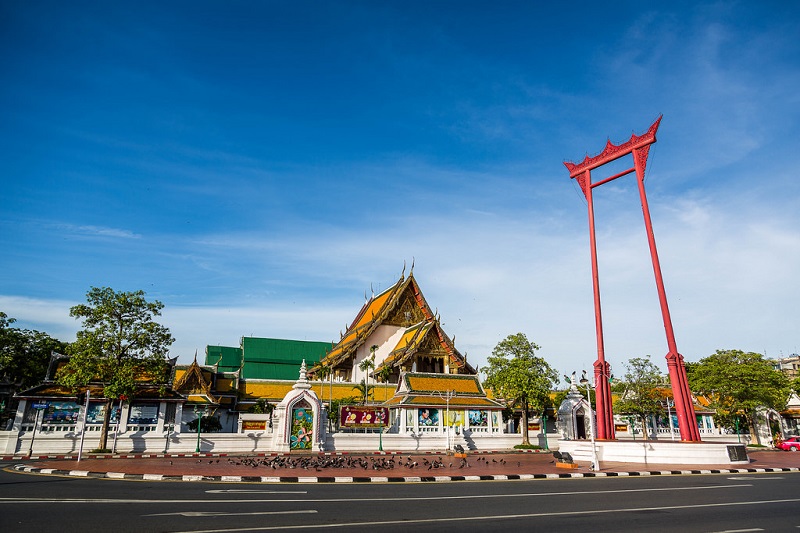
– National Museum & Wang Na Palace:
In the former grounds of the 18th Century Wang Na Palace, The Bangkok National Museum houses the largest collection of Thai art and artifacts in the country.
Opened by King Rama V to exhibit the antiques and gifts bestowed to him by his father, it once held a reputation for being an ill-organised gathering of dusty relics. That has now changed, with exhibits now arranged into three areas consistent with Thai history, and good English-language descriptions available. The front of the Sivamokhaphiman Hall is a Thai history gallery spanning the Sukothai through to the Rattanakosin periods. The Archaeological and Art History collection showcases items from Thailand’s prehistory to Sukhotahai and Ayutthaya eras right through to the modern Thai Kingdom, including many ancient sculptures.
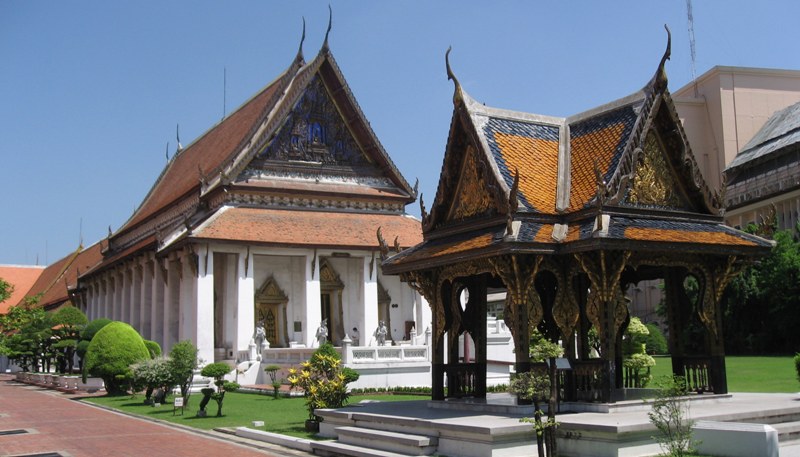
– Chatuchak Market:
With over 200,000 people visiting Chatuchak Market every weekend, the Bangkok marketplace has become the World’s largest Weekend Market. The Market has over 15,000 stalls which are spread across 35 acres and 26 sections which range from Food, Art, Antiques, Fashion and much more!
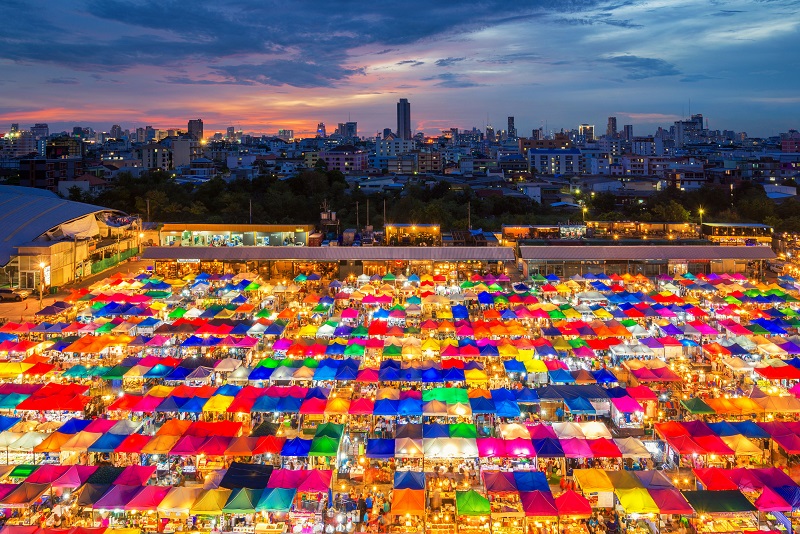
– Damnoen Saduak Floating Market:
Damnoen Saduak Floating Market is one of the largest and last remaining floating markets in Thailand. This authentic market has entranced travelers and photographers the world over with its vividly colorful scenes of vendors offering goods from long-tailed boats on the sleepy green Damnoen Saduak canal, built by King Rama IV in the 19th century. It’s located at 100 km southwest of Bangkok and it will take about 1,5 hours drive.
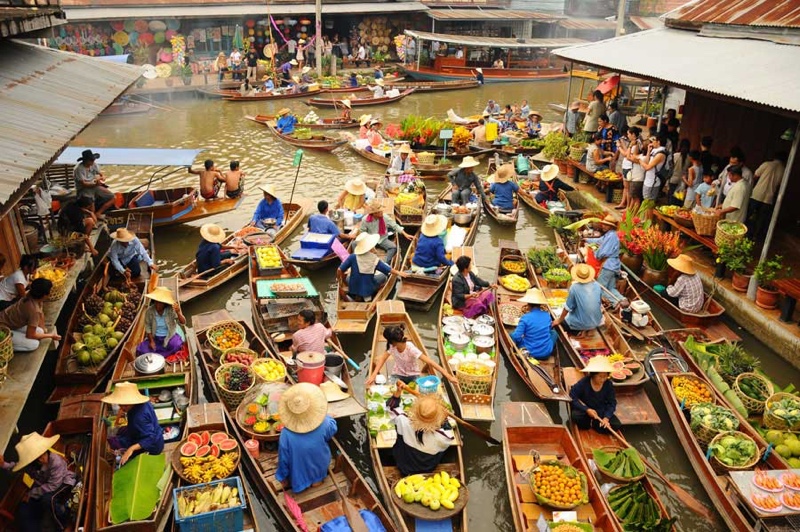
– Khao San Road:
The backpacking district of Khao San Road is the traveler hub of South East Asia. Jam-packed with raucous bars and restaurants as well as budget hostels, it’s a favorite for late-night revelers. 
– Jim Thompson House:
The Jim Thompson House is a museum in central Bangkok, housing the art collection of American businessman and architect Jim Thompson, the museum designer and former owner. Built in 1959, the museum spans one rectangular “rai” of land (approximately half an acre or 2023.43 meters). It is one of the most popular tourist destinations in Thailand; sporting vibrant jungle foliage in the heart of the city.
Following his relocation to Bangkok and the establishment of the Thai Silk Company Limited in 1948, Thompson also became a major collector of Southeast Asian art, which at the time, was not well-known internationally.
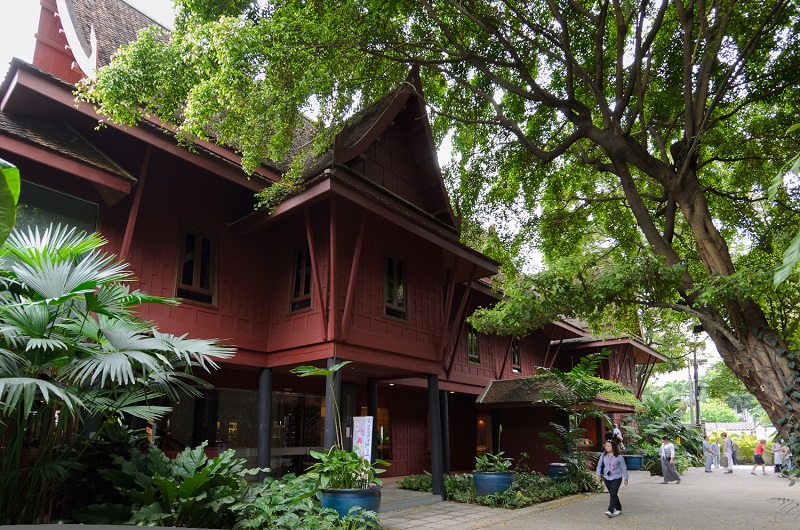
– Democracy Monument:
It’s a public monument in the centre of Bangkok. It occupies a traffic circle on the wide east-west Ratchadamnoen Avenue, at the intersection of Dinso Road. The monument is roughly halfway between Sanam Luang, the former royal cremation ground in front of Wat Phra Kaew, and the temple of the Golden Mount (Phu Kao Thong).
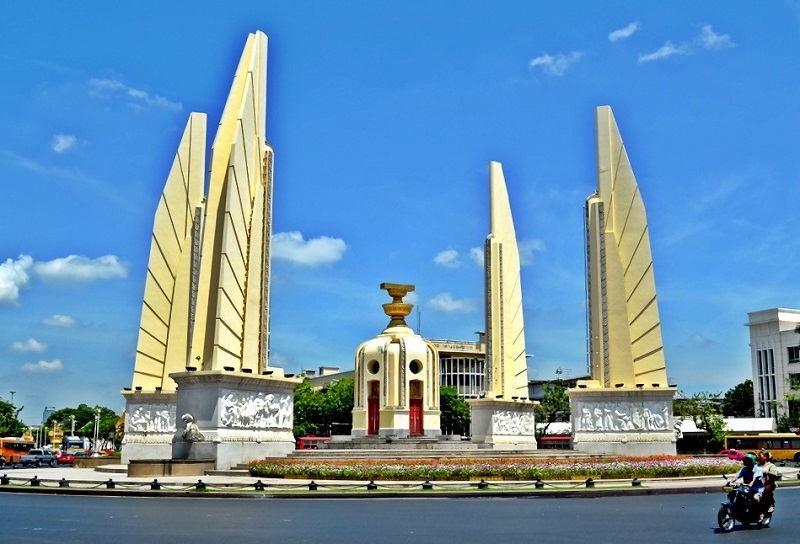
– Golden Mount Temple (Wat Saket):
Wat Saket, popularly known as the Golden Mount or ‘Phu Khao Thong’, is a low hill crowned with a gleaming gold chedi. Within, the 58-metre chedi houses a Buddha relic and welcomes worshippers all year round. The temple also hosts an annual temple fair in November, which lasts a week during Loy Krathong.
The temple grounds feature mature trees and typical Buddhist structures such as the main chapel, ordination hall and library. Its origins can be traced back to the Ayutthaya period (1350- 1767 AD) and it underwent major renovations during King Rama I’s reign (1782-1809).
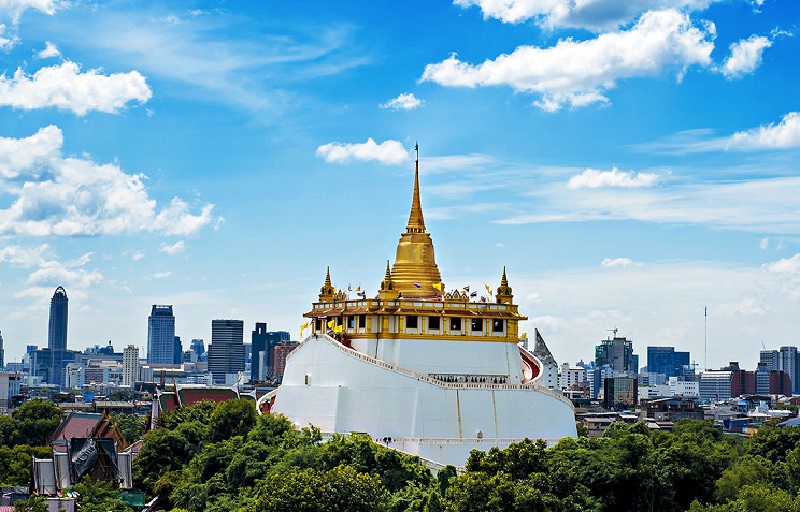
– Victory Monument:
This is an obelisk monument whicht was erected in June 1941 to commemorate the Thai victory in the Franco-Thai War. The monument is in Ratchathewi District, northeast of central Bangkok, at the center of a traffic circle at the intersection of Phahonyothin Road, Phaya Thai Road, and Ratchawithi Road.

Where to stay?
There are lots of hotels in Bangkok and here are some of the best deals you can find:
Booking.com

